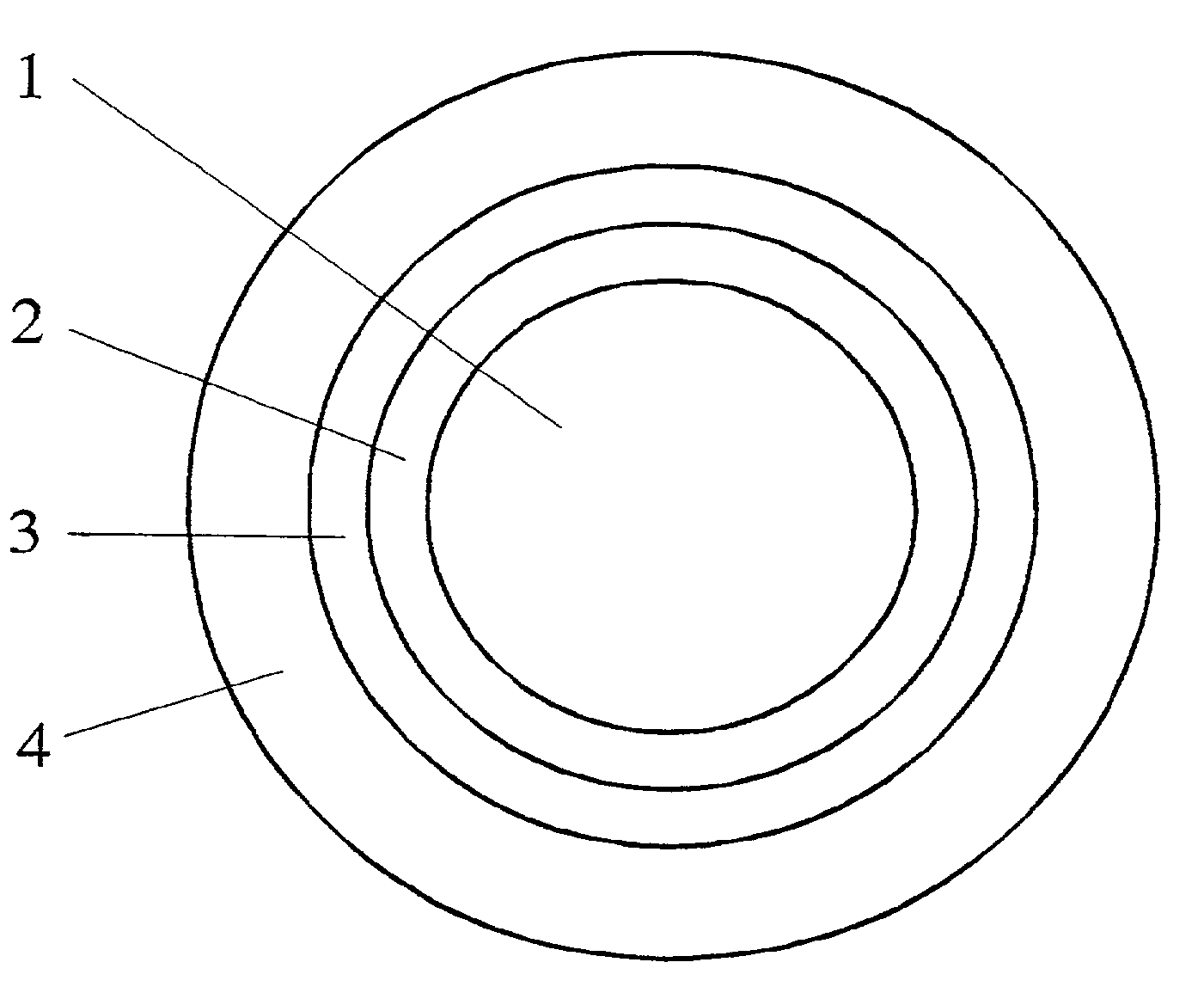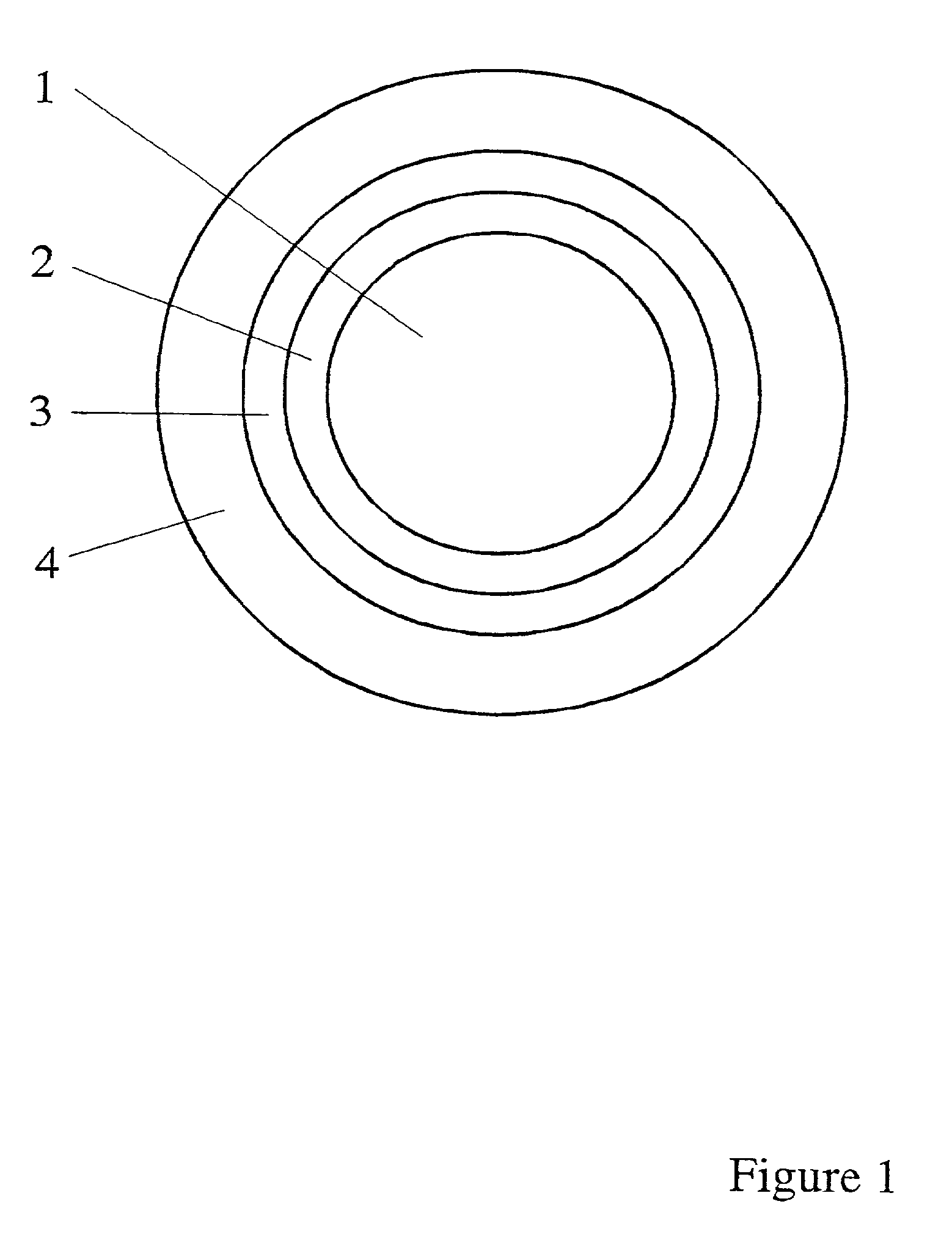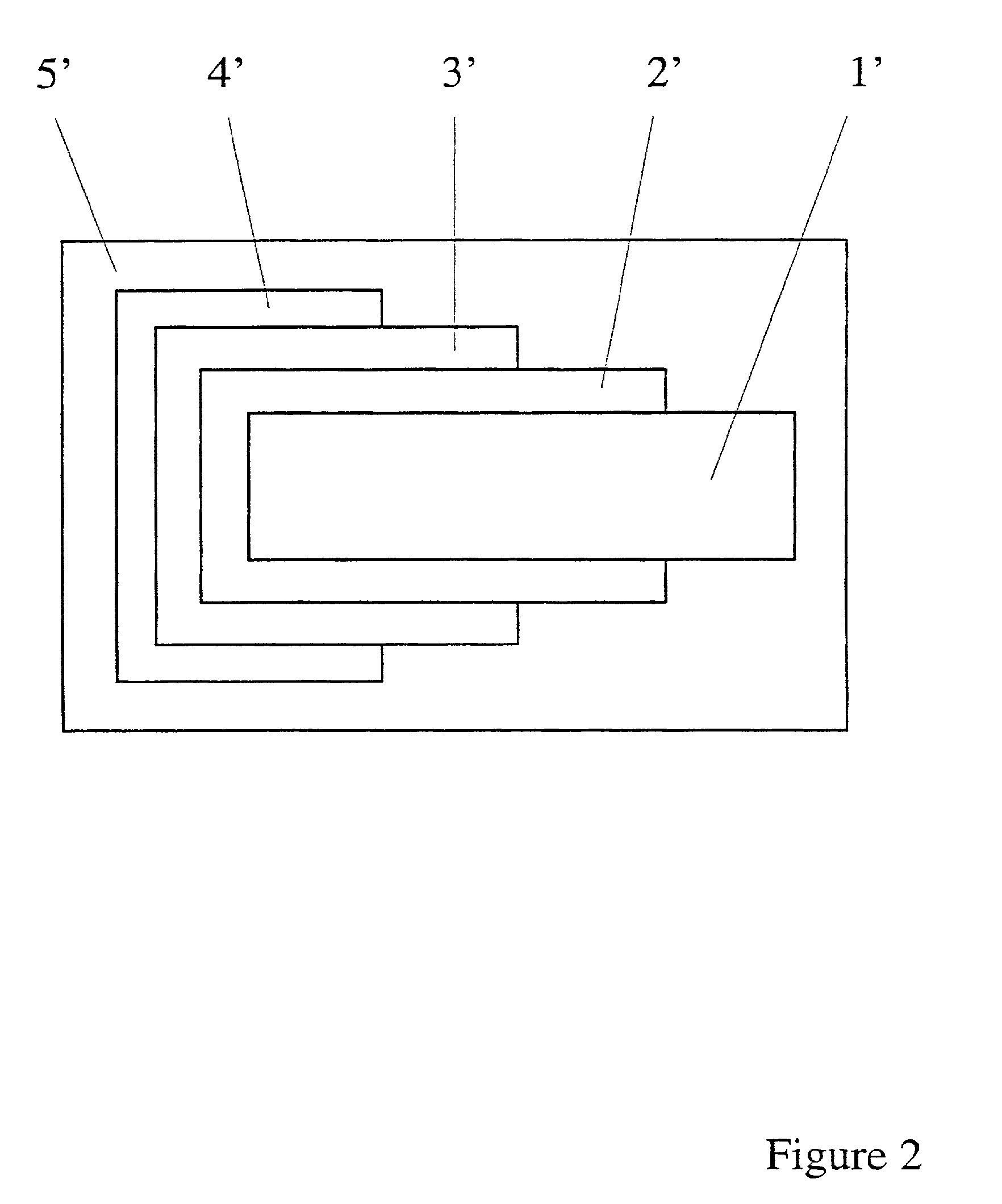Multilayered material bearing a biologically active agent and the preparation thereof
a biological active agent and multi-layered technology, applied in the field of multi-layered materials bearing biological active agents and the preparation thereof, can solve the problems of difficult control of the process, inability to build up devices with elegant drug delivery properties,
- Summary
- Abstract
- Description
- Claims
- Application Information
AI Technical Summary
Benefits of technology
Problems solved by technology
Method used
Image
Examples
example 1
Application of Heparin Loaded Silica Gel Onto a Grafted PLLA-co-CL Copolymer
[0048]In this example, heparin is immobilized onto silica gel and then grafted PLLA (poly-L-lactide) sheets are coated with the heparinized silica-gel. Bulk heparinized silica-gel samples were obtained for the drug delivery ability tests. It is known that silica-gel can be used as a drug delivery system (Kortesuo et al. 1999).
Preparation of Silica-Sol
[0049]The heparin immobilized silica-sol was prepared by a two step sol-gel process using acid as a catalyst (Brinker and Scherer 1990, Ellerby et al. 1992). The following reagents were used: tetraethoxysilane (TEOS) (Aldrich), deionized water, ethanol nitric acid (HNO3) (Merck) and ammonium hydroxide (NH4OH). The r-value (water / TEOS molar ratio) was 3.55. Ethanol was used as a solvent to obtain better viscosity (water / ethanol molar ratio=1). NH4OH was used to raise pH up to 4.5. Heparin used was a sodium salt of heparin obtained from Orion Corporation (biologic...
example 2
Control of the Retention of a Biologically Active Molecule (Heparin) to a Polymer Carrier by Varying the Chemical Reactivity (Functionality) of the Carrier by Grafting.
[0073]In this example, the degradable polymer (PLLA) is coated with biologically active agents. The surface properties of the copolymers of poly-L-lactide (PLLA) (Neste Ltd.) and poly-ε-caprolactone (PCL) (Sigma Co.) (PLLA / PCL=50 / 50) were altered by grafting with acrylamide (Promega Co.) onto the surface of PLLA-co-CL by electron beam (EB) irradiation (Holmlund 1999). The grafted polymer sheets were washed thoroughly with ethanol and deionized water. The grafted surface was then able to attach silica-gel or biologically active molecules such as heparin.
[0074]The grafted polymer was allowed to react with heparin solution (0.025 mg heparin / 5 ml incubation solution). Sodium salt of heparin was from Orion Pharma (biological activity 139 I.U. / mg). pH of the solution was adjusted before heparin addition, by acetic acid buff...
example 3
The Attachment of a Polymeric Layer on a Top of Bioactive Glass.
[0083]In this example, the degradable bioactive glass-13 (composition: 6% Na2O, 12% K2O, 5% MgO, 20% CaO, 4% P2O5 and 53% Si202) (Brink 1997) is coated with biocompatible, degradable polycaprolactone polymer by using organomodified silanes as coupling agents.
Silylation of Fibers
[0084]The biodegradable glass-13 fibers were prepared from glass melt (near 1100° C.) by drawing technique. After cooling down to room temperature the fibers were cut into small pieces (circa 10 cm long). These fibers were placed into a 50 ml falcon tube and the tube was filled with silylation reagent (2% of dichlorodimethylsilane (C2H6Cl2Si) in trichloromethane (CHCl3) solution). The silylation lasted for 10 min. Before washing the fibers carefully with deionized water, the silylation coating was let to stabilize for 24 h. The washed, silylated fibers were dried in a vacuum deccicator for an additional 24 h.
[0085]The pol...
PUM
| Property | Measurement | Unit |
|---|---|---|
| atomic number | aaaaa | aaaaa |
| thickness | aaaaa | aaaaa |
| molar ratio | aaaaa | aaaaa |
Abstract
Description
Claims
Application Information
 Login to View More
Login to View More - R&D
- Intellectual Property
- Life Sciences
- Materials
- Tech Scout
- Unparalleled Data Quality
- Higher Quality Content
- 60% Fewer Hallucinations
Browse by: Latest US Patents, China's latest patents, Technical Efficacy Thesaurus, Application Domain, Technology Topic, Popular Technical Reports.
© 2025 PatSnap. All rights reserved.Legal|Privacy policy|Modern Slavery Act Transparency Statement|Sitemap|About US| Contact US: help@patsnap.com



